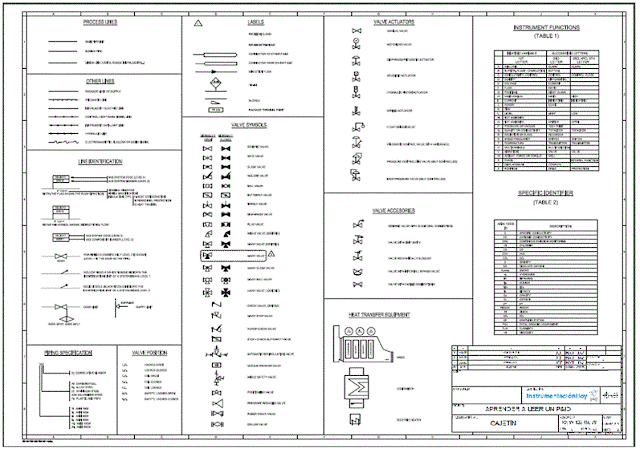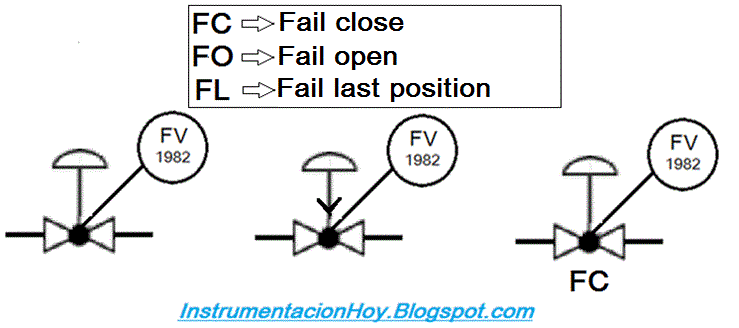1.1 A PUMP IN AN HYDRAULIC SYSTEM
1.2 A CONTROL VALVE IN AN HYDRAULIC SYSTEM
1.3 A CONTROL VALVE AS BANK OF PRESSURE
1.4 THE FLOW COEFFICIENT (CV) IN A CONTROL VALVE
1.5 CONTROL PHILOSOPHIES
_____________________________________________________________
1.1 A PUMP IN AN HYDRAULIC SYSTEM
What is a hydro pump? An hydro pump is a devide which pushes a certain volume of water at a certain pressure.
Note: If the pump motor is connected directly to the electrical net then it is going to run in a fixed speed. But if
A hydro pump which is running at a certain speed is defined by a curve which sets the volume of fluid that the pump can move at certain pressure which usually measured in terms of Total dynamic height.
Please see below charts wich shows a typical curve for a fixed speed hydro pump (Total dynamic height is shown in the Vertical Axis in meters and the Volume per hour or Flow is shown in the Horizontal Axis in cubic meters per hour)
The different curves for a variable speed curve.
The performance of a pump is set by the "load request curve". This curve shows the pressure in terms of "total dynamic height" which will be required by the pump.
The "total dynamic height" is related to the meters that the pump is able to raise the fluid. The intersection between the "load request curve" and "the pump curve" will define the flow that the pump will be able to move.
For instance (see chart), if we aim to raise the fluid at 3m (and we exlude any dynamic resistance), we will draw an horizontal curve of "load request" at 3m of dynamic height and the working point of the pump will be set by the intersection of this curve and the pump curve (according to below figure, the pump will be able to push up 3m a volume of 5.5 cubic meters per hour (flow of 5.5m3/h):
It is worth mentioning that the "load request" curve is never an horizontal line but an upwards curve (see below figure) due to the dynamic resistance. The dynamic resistance is the force which opposes the flow and increases exponentially with the flow.
1.2 A CONTROL VALVE IN AN HYDRAULIC SYSTEM
A control valve is a device which "controls" the flow in a pariticular hydro system.
The "point A" in the curve of the pump is defined by the highest pressure and no flow and represetns the typical case of a pump running against a closed valve.
The "point B" in the curve of the pump is defined by the maximum flow and minimum pressure and represents the typical case of a pump running agains a fully open valve (minimum resistance).
Therefore, the curve of the valve becomes more vertical as the valve is closing and becomes more horizontal as the valve opens, meaning that the higher the pressure the lower the flow.
Let's analyze a hydraulic system in which we have placed several measure points.
1.- Point 1: The pressure is low in the pump suction (0.5 barg)
2.- Point 2: The pump increases the pressure (10 barg ) "in the pump outside"
3.- Point 3: Before the control valve the pressure will have dropeed due to the dynamic resistance, which will depend on the pipe diameter and the pipe length (8 barg)
4.- Point 4: The control valve decreases the pressure as it closes. In this case the pressure after the control valve is 2 barg
5.- Point 5: The pressure decreaes from Point 4 due to the dynamic resistance. (1 barg)
6.- Point 6: Atmosphere tank (0 barg)
1.3 A CONTROL VALVE AS BANK OF PRESSURE
1.3 A CONTROL VALVE AS BANK OF PRESSURE
Something we believe is worth understanding is that the control valves are like a bank of pressure: they reduce/increase the pressure when required.
The pressure drop is lost energy which is retained in the valve.
Reserving sufficient pressure drop in the design phase is key if the control valve will be used to control the flow of the system. Otherwise, we might see an scenario in which the flow does not increase as the valve opens due to a very low pressure drop in the control valve (compared with the total pressure drop in the system).
Note: Please, read the article "Realistic pressure drops in control valves" by JR Connel (For Alberta Technology Insitute) to see more information about the optimal pressure drop that should be reserved in a control valve. The articule could be easiy found in internet.
In general terms and following several recommendations, we would propose to reserve a minimum of 10% of the pressure dropo r 20% in long lines.
For example, in this case we can reserve 1 or 2 bar of pressure drop.
1.4 THE FLOW COEFFICIENT (CV) IN A CONTROL VALVE
The CV (also named Kv or flow coefficient) is defined as the volume of water (in gallons) at 60F which flows per minute through a valve which has a pressure drop of 1psi.
The suppliers of control valves indicate "the maximun CV" and the "CV curve".
"CV curve": is the CV values along the valve travel
"The maximum CV": refers to a valve which is completely opened.
According to the CV curve there are 3 different control valve types:
i) Quick opening: These valves are usually used for "Safety valves".
ii) Linear: These valves are usually used if they work in the entire range (temperature loop or in a level loop)
iii) Equal-percentage: These valves are usually used if the valve works around the same point in a limited range. (pressure loop or in a flow loop).
1.5 CONTROL PHILOSOPHIES
Whenever a control valve is requires it is very important to select the right philosophy.
We differentiate 5 different valves depending on the control philosophies:
i) On-off ii) Control valve iii) "Cascade control" iv) Intermediate position and e) "Split range"
i) On-off valves have only 2 positons: Open (it allows the fluid to flow) and Closed (it stops the flow). This valves are typically used in control loops which do not require a very adjusted control.
Exapmle: Control valve in a water tank in which keeping the level constant is not a requirement (see below chart).
In the above example, if the level of water is below a value (Level A), it allows the water to flow until the water reaches a certain level (Level B).
Once the tank has reached the Level B, the valve does not open until the level of water reaches again the Level A. These will allow us to keep the pump stopped while the valve remains closed. The difference between the 2 levels (Level A and Level B) is called hysterisis.
Note: A manual valve is usually installed after the pump to allow us to regulate the flow in the operating point.
ii) Control valve: A control valve is used if an adjusted control is required. For instance, if the measures variable has to be closed to a certain point which is called "set point" (in this case the control tries to get to the set point continually). This philosophy always requires the system to measure the variable which is required to be kept at a certain level.
There are diferent types of regulation control valves, self regulated, controlled by electric positioner and controlled by pneumatic positioner.
Example: Control valve in a water tank in which keeping the level at 5m is a requirement.
As it can be seen in the above example, the control valve will start opening when the level is below the set point of 5m. As the level is getting closer to 5m the valve will start closing.
The set point could be measured by a level transmitter provides the information about the level of water to the to the controller. Depending on the information received by the controller the valve will start opening/closing to reach the set point of 5m.
Note: The control valve and the transmissor are the control loop
iii) The cascade control: The cascade control could be under stock as a faster version of a control valve as it also measures the change in the variable. This control will require a larger amount of infromation.
Example: Cascade control in a water tank in which keeping the level at 5m is a requirement.
In the above example we also have 2 devices to measure the volume of water which goes in/leaves the tank.
If we were to have a control valve in a simple loop, the valve would close as the variable measured is in the set point of 5m.
However, if we were to have a cascade control, the control would also see that the volume of water which is leaving the tank is greater than the one is getting in and therefore the level of water would start decreasing. Therefore, the valve would open (instead of closing as a simple loop would do) avioding that the level of water falls as it would try to make the volume of water which gets into the tank equal to the volume of water which leaves the tank.
Note: The by-pass control in a turbine is an example of cascade control
iv) Intermediate positions: This valve is used when it is required to set several points of operation.
Example: Let's assume that it is required to set 3 operation points to control the temperature of house through a valve depending on the period of the day: morning (50%), afternoon (10%) and evening (80%). This valve would allow us to keep the house warmer in the evening than in the morning and keeping a bit the temperature in the afternoon.
The regulatino system of an intermediate position system is very simple and does not require modulate regulation.
v) Split control: This valve is used when the required set point has a very wide range.
Example: We would used a split control valve if it is required to regulate the flow of a pipe between a very high and a very low level. As most of the valves do not properly regulate at levels above 90% of opening and below 10% of closing, no valve which is used to regulate large "caudales" would able to properly regulate low "caudales". Therefore we would use a split control which implies setting to valves in a parallel system.
As it can be seen in above charts, the small valve is used to regulate (caudales) below a certain level. When the caudal is above a certain level, the small valve will start closing and the process will be controled by the large valve.
By: Julio César Fernández Losa 24/06/2015
Contac us: InstrumentacionHoy@gmail.com




























































